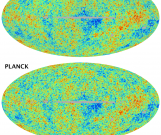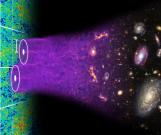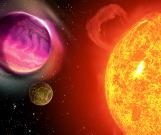Scientists tools

March 23, 2013 by admin
To predict the temperature fluctuations in the Cosmic Microwave Background (CMB), as well as the spatial distribution of galaxies, we use the numerical code CAMB.
Then, we take the measurements made by the different experiments, for instance, for the CMB, we use data from the NASA Lambda site and for the spatial distribution of galaxies, we use data from the different galaxy surveys, as, for instance, data from the Sloan Digital Sky Survey III and perform a fit to our theoretical predictions using Monte Carlos methods
We also make theoretical predictions of the expected signatures from the different particles that will appear in the Large Hadron Collider (LHC)Large Hadron Collider (LHC), using generators of high energy events, as Pythia or Herwig, and, together with the detector simulations, as those made by Geant4 we do our physical analyses, using ROOT.
For the signals expected from dark matter annihilation products from the center of the galaxy, or the Sun's interior, we use other tools, as DARKSUSY and for neutrinos arising from dark matter annihilation products, we use WIMPSIM.
For neutrinos propagating from a man-made source towards a detector crossing the Earth interior we use GLobES and then we fit the data to the different theoretical models using the MonteCUBES Package.







